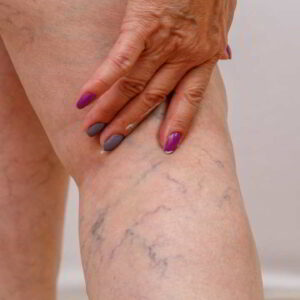Attention Deficit Hyperactivity Disorder (ADHD) is often misunderstood, especially when it comes to women. For decades, ADHD was seen as a condition that primarily affected young boys, leaving countless women undiagnosed or misdiagnosed. Today, awareness is growing, but many are still unaware of the unique ways ADHD symptoms in women appear. Recognizing these signs is crucial for early diagnosis, better management, and improved quality of life.
Why ADHD Looks Different in Women
ADHD has three main presentations: inattentive type, hyperactive-impulsive type, and combined type. While boys and men often display hyperactive and impulsive behaviors, women are more likely to experience inattentive symptoms. This difference makes their struggles less visible to others, often leading to being overlooked.
Hormonal changes also influence how ADHD shows up in women. Fluctuations in estrogen and progesterone during menstrual cycles, pregnancy, and menopause can intensify symptoms such as forgetfulness, mood swings, and lack of focus.
Common ADHD Symptoms in Women
1. Difficulty Focusing and Paying Attention
Women with ADHD may have trouble concentrating on conversations, lectures, or tasks at work. They might start projects enthusiastically but struggle to complete them. Unlike the stereotypical “hyperactive” ADHD, inattentiveness can go unnoticed and even be mistaken for laziness or lack of interest.
2. Chronic Disorganization
One of the most common ADHD symptoms in women is chronic disorganization. Women may find it hard to keep up with household responsibilities, paperwork, deadlines, or even remembering daily routines. Their living or workspaces may often feel cluttered despite repeated attempts to organize.
3. Emotional Sensitivity and Mood Swings
ADHD affects emotional regulation. Women may feel easily overwhelmed, experience intense mood swings, or struggle with rejection sensitivity. Small setbacks can trigger strong feelings of frustration or sadness.
4. Forgetfulness and Memory Challenges
Forgetting appointments, losing items, or missing deadlines is not uncommon. Short-term memory struggles make managing daily responsibilities more stressful, particularly when balancing work, family, and social obligations.
5. Restlessness and Trouble Relaxing
While hyperactivity in women may not look like constant movement, it often shows up as inner restlessness. They may have racing thoughts, difficulty sitting still, or a constant need to stay busy.
6. Impulsivity in Decisions and Speech
Impulsive shopping, changing jobs quickly, or interrupting others mid-conversation are examples of impulsivity linked to ADHD. These behaviors can affect relationships, financial stability, and career progression.
7. Overthinking and Anxiety
Many women with ADHD experience co-occurring conditions like anxiety or depression. Overthinking small details, worrying excessively, or constantly second-guessing themselves are signs often mistaken for anxiety alone, while ADHD remains undiagnosed.
The Hidden Struggles of Women with ADHD
Masking Symptoms
Women are often conditioned to meet social and family expectations. To cope, they mask symptoms by working extra hard to appear organized or “put together.” This masking leads to exhaustion, burnout, and feelings of inadequacy.
Misdiagnosis and Delayed Diagnosis
Many women are first diagnosed with depression, anxiety, or bipolar disorder before ADHD is considered. Because their symptoms don’t fit the stereotypical hyperactive child, they may not receive the correct support until adulthood.
Impact on Daily Life
Unrecognized ADHD symptoms in women can affect every aspect of life:
-
Work: Missed deadlines, disorganization, and difficulty concentrating.
-
Relationships: Struggles with communication, impulsivity, or forgetfulness.
-
Parenting: Feeling overwhelmed with routines, scheduling, and multitasking.
How ADHD Symptoms Change Across Life Stages
Childhood
Girls often present with inattentive symptoms like daydreaming, trouble following directions, or forgetting schoolwork. They may be labeled as “shy” or “unmotivated” rather than being evaluated for ADHD.
Adolescence
Hormonal changes during puberty can worsen ADHD symptoms. Teenage girls may struggle with low self-esteem, academic challenges, and peer relationships.
Adulthood
Adult women juggle multiple roles—career, caregiving, household responsibilities. Without proper diagnosis, these demands can become overwhelming, leading to chronic stress and burnout.
Menopause
Hormonal shifts in menopause can intensify ADHD symptoms, making focus and memory issues more noticeable. This is often when some women finally seek evaluation.
The Emotional Toll of ADHD in Women
Living with undiagnosed or untreated ADHD can cause:
-
Low self-esteem due to repeated struggles
-
Chronic stress from disorganization and missed responsibilities
-
Strained relationships with family and partners
-
Feelings of guilt for not meeting expectations
Recognizing and validating these challenges is the first step toward support and treatment.
Diagnosing ADHD in Women
Evaluation Process
Diagnosis involves medical history, behavioral assessments, and questionnaires. Since symptoms can overlap with other conditions, an experienced professional is crucial for accurate evaluation.
Barriers to Diagnosis
-
Lack of awareness about female ADHD symptoms
-
Cultural expectations for women to manage household and caregiving seamlessly
-
Coexisting conditions like anxiety or depression masking the root cause
Managing ADHD Symptoms in Women
Medical Treatment
Stimulant and non-stimulant medications can help regulate focus and impulsivity. Treatment plans are personalized based on individual needs and medical history.
Therapy and Coaching
Cognitive Behavioral Therapy (CBT) helps women manage emotional regulation, build organizational skills, and develop coping strategies. ADHD coaching provides structured support for daily challenges.
Lifestyle Strategies
-
Routine building: Consistent schedules reduce forgetfulness.
-
Digital tools: Reminders, planners, and apps help with organization.
-
Self-care: Exercise, proper sleep, and balanced nutrition improve focus and reduce stress.
Support Networks
Support groups—online or in person—help women connect with others who understand their experiences, reducing isolation and stigma.
Why Awareness Matters
Raising awareness about ADHD symptoms in women helps reduce stigma and ensures more women receive timely diagnosis and treatment. Increased understanding empowers women to embrace their differences, seek appropriate care, and thrive in both personal and professional settings.
FAQs About ADHD Symptoms in Women
Q1: Why are ADHD symptoms in women often missed?
Because women display more inattentive symptoms rather than hyperactive behaviors, their challenges are often mistaken for stress, anxiety, or lack of motivation.
Q2: Can ADHD symptoms get worse with age?
Yes, especially during hormonal changes like puberty, pregnancy, and menopause. These fluctuations can intensify symptoms.
Q3: What’s the difference between ADHD in men and women?
Men often show more external hyperactivity, while women experience more internal symptoms like disorganization, forgetfulness, and emotional struggles.
Q4: Can lifestyle changes help manage ADHD symptoms in women?
Yes, routines, organizational tools, exercise, and stress management techniques can significantly improve daily functioning.
Q5: Is ADHD in women treatable?
Yes. With proper diagnosis, treatment plans including medication, therapy, and lifestyle strategies can help women manage symptoms effectively.
Final Thoughts
ADHD is not just a childhood condition, nor is it limited to men. Understanding ADHD symptoms in women is essential for timely diagnosis and effective treatment. By breaking the stereotypes, raising awareness, and supporting women with ADHD, we can help them lead balanced, fulfilling lives.




